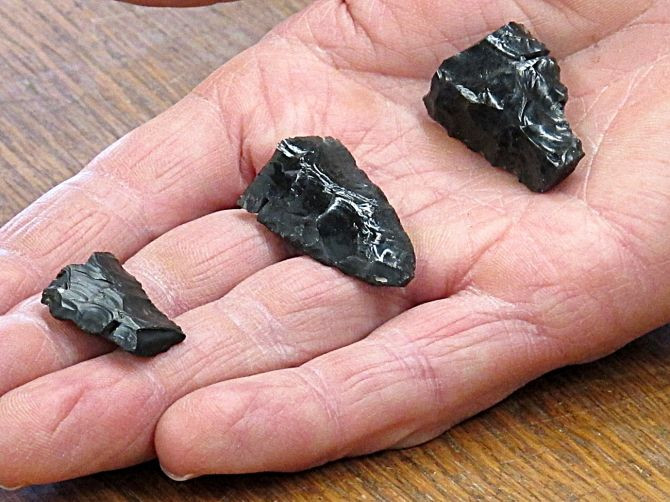Fossils Indicate Two Separate Civilizations Lived in North America 13,000 Years Ago

DNA obtained from coprolites, as well as darts, spearheads, and other archeological evidence, has made it clear that human beings have existed in western North America as far back as 13,000 years ago.
Coprolites are fossilized fecal matter.
Previous research has pointed to the Clovis civilization as the earliest civilization in North America. Evidence has placed Clovis civilization in what is now South Carolina. This evidence from the Paisley Caves is about 200 miles southwest of Eugene, Oregon – and is dated during or before the time of Clovis civilization.
This new conclusion comes from radiocarbon dating of coprolites, bones, twigs, and artifacts cultivated from caves. Many of the coprolites were obtained and publicized in 2008. Though DNA cannot be directly dated with radiocarbon technology, researchers extracted fibers and carbon from the coprolites through distilled water. The fiber and carbon were compared to the radiocarbon-dated coprolites. This was done in part to address concerns that earlier evidence had been contaminated.
It suggests that while Clovis arrived in the southeastern United States and moved west, Western Stemmed civilization arrived in the west and moved east. The evidence obtained comes from the Great Basin of Oregon, but three other Western sites have produced evidence of the same age and type. Scientists now believe that two civilizations existed simultaneously in North America, without meeting for a period of hundreds of years.
Evidence has pointed to the human arrival in the Americas between 20,000 and 50,000 years ago. The most widely proliferated theory has posited that people arrived through a land bridge from Siberia during the last Ice Age, but a new theory gaining prominence suggests that people arrived in the Americas by use of a “kelp highway” from Japan. Researchers remain uncertain as of yet as to the rationale of this massive moving. The additional evidence, however, points still to the more widely cited Siberia-Alaska theory.
The findings have been published in Science magazine.



























